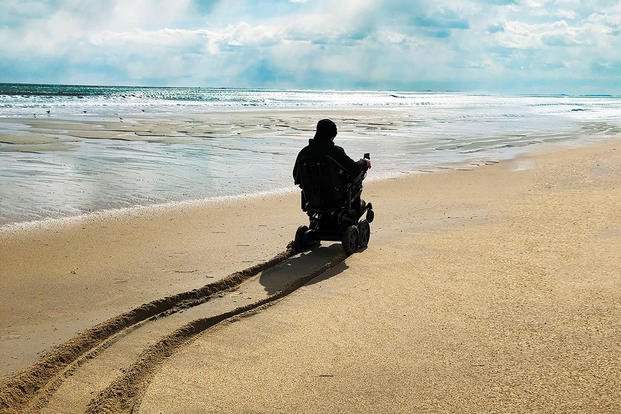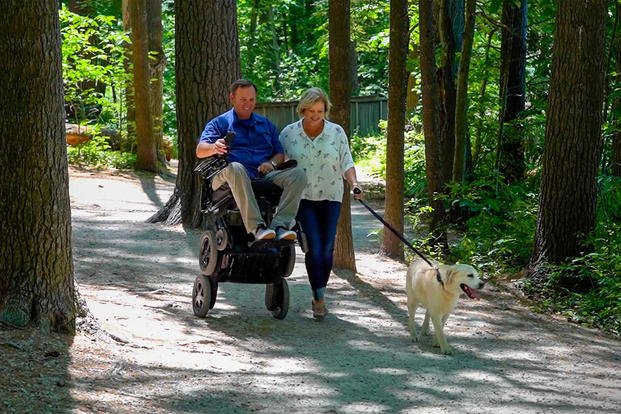Veterans who have a service-connected disability face challenges -- both seen and unseen -- that the Department of Veterans Affairs (VA) may not be able to take care of completely. Approximately 250,000 veterans use wheelchairs, according to an article in Military Medicine, and while they are usually covered by the VA, technology has evolved and the latest developments can benefit veterans.
Wheelchair users are seated, which puts them below eye level for most adults with whom they interact. This affects their interaction with others, making everyday transactions like ordering food, checking out at a store or even checking in to their appointments difficult and frustrating.
A personal mobility device that allows them to rise or one that climbs stairs and manages any terrain can bring a completely different perspective for the veteran and the rest of the world.

Not every veteran will need, or want, a highly technical wheelchair or personal mobility device (PMD), but for those who do, there are a few things to consider:
- Where will it be used, inside or outside?
- How long will it be used each day?
- Are there limitations on space or transporting it?
- How will the veteran get in and out of it?
- Does the veteran need a manual wheelchair, mobility scooter or power wheelchair?
When these decisions have been made, then there is choosing what kind of wheelchair or PMD is needed. For some veterans, a manual wheelchair may be all they need. While it may seem basic, it is just that. Manual wheelchairs fold easily, can be transported easily and are very easy to use.
The next step up would be a power wheelchair, one that doesn't need to be pushed by someone else or propelled by the user. Veterans who are unable to propel themselves or who are using a wheelchair full time may opt for a power wheelchair to make things easier. These wheelchairs are operated by a joystick. Some of them are made to be lightweight and easily transportable, and some aren't.
Another thing to consider when selecting a mobility device is the cost, as specialty devices may not be covered by VA benefits. Veterans may, however, be able to get a wheelchair loan to make this purchase more affordable.
Approximately one-third of the 19 million veterans in the United States have a service-connected disability, and for those veterans who served after 9/11, nearly half of them have a disability rating of at least 60%.
For the average veteran, the cost of a specialty wheelchair is significantly out of their budget. For a veteran with a disability rating of 60%, the disability payment is about $1,200 per month, before any dependents or extra aid. A fixed income or limited income may make it hard to afford a specialty mobility device. Veterans can look for assistance organizations like Wounded Warrior Project or the Semper Fi Foundation for grants to help offset the cost.
Stay on Top of Your Veteran Benefits
Military benefits are always changing. Keep up with everything from pay to health care by subscribing to Military.com, and get access to up-to-date pay charts and more with all latest benefits delivered straight to your inbox.












